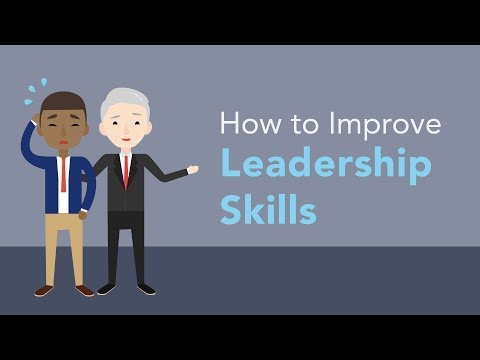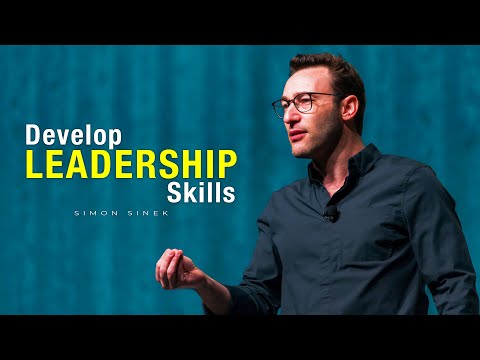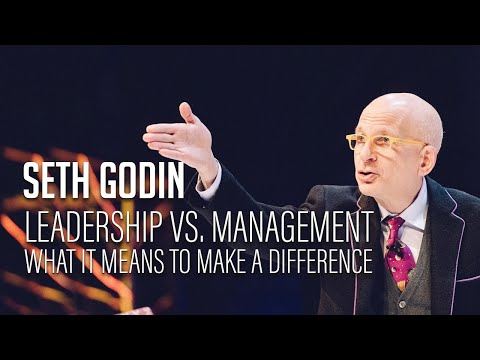In today’s fast-paced business world, leadership skills training is pivotal for unlocking potential and driving innovation. It’s about cultivating leaders who can navigate challenges with grit and grace, and those who do not just manage, but inspire transformation. With training that hones both emotional and intellectual capabilities, professionals can transcend mediocrity and forge paths of genuine change. This article will delve into powerful strategies to elevate your leadership prowess, empowering you to leave an indelible mark on your organization.

Embracing Emotional Intelligence in Leadership
Emotional intelligence (EI) is the bedrock of authentic leadership. Leaders who excel here, like Satya Nadella of Microsoft, don’t just direct; they connect. Satya’s leadership style, deeply rooted in empathy, showcases how understanding and managing emotions can drive team success. EI encompasses self-awareness, self-regulation, motivation, empathy, and social skills—it’s about understanding both your emotions and those of others.
Incorporating EI in leadership skills training can significantly enhance team dynamics. By cultivating EI, leaders can effectively inspire their teams, encouraging a culture where everyone’s voice is valued. It’s the delicate balance of head and heart that transforms strong intentions into impactful actions, fostering a workplace environment where innovation thrives.
Moreover, training workshops focusing on emotional intelligence help leaders to engage in active listening and empathy-driven dialogues. Such skills are indispensable in today’s diverse and inclusive workplace settings. Invest in honing EI and watch how it transforms the spirit and productivity of your team.

Fostering a Growth Mindset
The concept of a growth mindset, championed by psychologist Dr. Carol Dweck, is revolutionizing how leaders inspire change. This mindset embraces challenges and views failures as stepping stones to success. Netflix’s Reed Hastings epitomizes this approach—his willingness to adapt and innovate amid industry disruptions highlights the power of embracing growth.
Leadership skills training that emphasizes a growth mindset equips leaders to catalyze creativity and resilience within their teams. Encouraging employees to explore uncharted territories without fear of failure ignites a passion for learning and improvement, essential for organizational advancement.
Empowering teams to adopt this mindset involves continuous learning opportunities and feedback-rich environments. By fostering a culture where experimentation is celebrated, organizations can continuously evolve, innovate, and overcome obstacles with strategic dexterity.

| Aspect | Description |
| Purpose | To identify high-potential individuals and enhance the skills of current leaders in both soft and hard leadership skills. |
| Key Components | – Character: Integrity and honesty in actions and decisions. |
| – Consistency: Reliable and predictable behavior in leadership actions. | |
| – Commitment: Dedication to team and organizational goals. | |
| – Communication: Clarity and effectiveness in conveying messages. | |
| – Creativity: Ability to innovate and adapt to challenges. | |
| Core Skills for Leaders | – Ability to delegate tasks effectively. |
| – Inspiring and motivating team members. | |
| – Confidence in decision-making and taking actions. | |
| – Effective communication, both verbal and non-verbal. | |
| Training Methods | – Workshops and seminars on leadership theories and practices. |
| – Mentorship and coaching programs. | |
| – Experiential learning through simulations and role-play. | |
| – Online courses and e-learning modules for flexible access. | |
| Benefits | – Improved leadership capabilities and readiness for future roles. |
| – Better team performance and higher employee engagement. | |
| – Enhanced problem-solving and decision-making abilities. | |
| – Greater organizational innovation and agility. | |
| Target Audience | Individuals identified as high-potential leaders or those currently in leadership positions in need of skill enhancement. |
| Challenges Addressed | – Overcoming current organizational challenges through enhanced leadership. |
| – Bridging the gap between existing skills and necessary competencies. |
Cultivating Strategic Thinking and Vision
Strategic thinking is the hallmark of successful leaders. Take Elon Musk, for example—his visionary prowess with ventures like SpaceX is rooted in his ability to think several steps ahead. Leadership skills training focusing on strategic thinking empowers leaders to visualize long-term goals and reverse-engineer the path to achievement.
Leaders can learn to craft compelling visions and action plans through practical exercises in scenarios and simulations. This forward-thinking approach allows them to handle complex situations effectively, ensuring their organizations remain agile and competitive.
Developing strategic foresight involves understanding market trends and consumer behaviors, aided by techniques like SWOT (Strengths, Weaknesses, Opportunities, Threats) analysis. Leaders who master strategic thinking can drive their organizations to an extraordinary future, effectively balancing short-term victories with long-term objectives.

Enhancing Communication Proficiency
At the core of impactful leadership lies immaculate communication. Jeff Bezos, CEO of Amazon, exemplifies how clarity can shape corporate success. Effective communication is about more than just speaking—it’s about ensuring that the message resonates with diverse audiences and drives engagement.
Leadership skills training that improves communication proficiency offers insights into articulating visions clearly and listening intently. Developing these skills can significantly enhance leaders’ ability to connect with team members, empowering them to influence and inspire.
Training modules often focus on body language, active listening, and crafting messages that resonate with varied stakeholders. By perfecting these skills, leaders can foster trust and transparency within their organizations, paving the way for stronger, more collaborative teams.

Building a Culture of Collaboration
Collaboration is the cornerstone of innovation, as demonstrated by Pixar’s thriving creative culture under Ed Catmull. In fostering an environment where ideas flourish unencumbered, leadership skills training empowers teams to achieve unprecedented synergy and success.
By prioritizing collaborative techniques, leaders can harness diverse perspectives and foster an inclusive environment. This open sharing of ideas leads to rich brainstorming sessions and breakthroughs, invaluable for driving organizational success.
Training initiatives that emphasize teamwork skills refine leaders’ abilities to harness the power of collective brains. With all voices contributing, organizations can navigate the increasingly complex business terrain with agility and insightful solutions.
Leveraging Data-Driven Decision Making
Today’s data-rich landscape demands leaders who can interpret analytics to guide decision-making processes. Uber’s Dara Khosrowshahi’s reliance on data exemplifies maximizing outcomes through informed strategic choices. Leadership skills training that includes data literacy equips leaders to analyze data, predict trends, and make calculated decisions.
With data-driven decision-making, leaders can optimize resource allocation and predict future challenges, ensuring robust business strategies. Regular workshops can focus on data interpretation skills, translating overwhelming stats into clear actions.
Ultimately, a data-informed approach allows leaders to navigate uncertainties with precision and confidence, enhancing overall organizational performance.
Championing Diversity and Inclusion
Embracing diversity and inclusion is more than a moral imperative; it’s a strategic advantage. Arne Sorenson, the former CEO of Marriott, championed these values, unlocking innovation through varied perspectives. Leadership skills training that prioritizes inclusivity equips leaders to foster an environment where everyone thrives.
Diversity in leadership enriches organizational culture, promoting creativity and solutions that reflect diverse market needs. Training programs focusing on cultural competency and implicit bias awareness are crucial for leaders looking to strengthen their teams through varied talents.
By valuing diverse voices, leaders can create a more dynamic, adaptable organization known for its innovative solutions and inclusive practices. This commitment to diversity and inclusion not only drives business success but also builds a legacy of empowerment and opportunity.
Innovating Beyond Traditional Leadership Models
As we delve into the intricacies of leadership skills training, it’s undeniable that innovation lies at its core. The evolving business setting calls for leaders to harmonize technological advancements with human-centric skills. Encouraging creativity and digital fluency in leadership training prepares leaders to innovate fearlessly.
Transformational leaders embrace an ever-adaptive mindset, continuously learning and experimenting. This adaptability ensures they remain at the forefront of their industries, turning insights into action and driving lasting change.
By breaking free from old paradigms and integrating groundbreaking methodologies, leaders unlock unprecedented potential. This unique approach empowers organizations to flourish in 2024 and beyond, inspiring future leaders to harness their limitless ability for innovation and growth.
Embrace these transformative facets of leadership skills training and watch as your career and organizational impact reach new heights. As we step into a new era of leadership, the bold and innovative will not only thrive but redefine success itself.
Leadership Skills Training: Unleash Potential
Looking to shake up your leadership skills training? Well, you’ve arrived at just the right place. Leadership skills aren’t just for the boardroom anymore; they’re your ticket to unleashing your full potential and that of others. Surprisingly, modern leadership training doesn’t just focus on strategies and theories but also dives into an array of interesting areas. So, let’s dive into some fun facts and trivia about leadership and see how they relate to the dynamic world of cultivating future-ready leaders.
Unconventional Leadership Insights
Did you ever think a teacher exploring alternative platforms could offer lessons in leadership? Turns out, engaging a broad audience requires multifaceted skills not unlike those necessary in teacher Onlyfans scenarios. Captivating an audience is crucial, and tapping into unique venues helps leaders refine their adaptability. Speaking of honing skills, many entrepreneurs credit their success to effective coaching Skills For Entrepreneurs. It’s all about crafting the right message for the right audience.
Innovation and Leadership
Ever wondered how those in the leadership sphere stay ahead of the curve? Well, some rely on clever venture capital Strategies to fuel innovation. Engaging in these high-stakes maneuvers doesn’t just boost financial growth; it also fortifies decision-making ability. Interestingly, the today rate of interests can influence business decisions in unforeseen ways. Leaders need agility and foresight, always ready to pivot when the financial winds shift.
Building Relationships in Leadership
Let’s meander into the world of mentorship. Simply put, great leaders are often crafted by even greater mentors. Mentorship For business leaders acts as a cornerstone of leadership development, offering guidance and wisdom which sometimes parallels the construction of Homes new Homes. The foundations, as both builders and mentors can tell us, are critical for longevity and success. Surprisingly, even the charming coastal town of walton on The naze has noteworthy tales of historic mentorship unfolding along its shores.
Leadership in Pop Culture
Interestingly, pop culture often gives us metaphorical, albeit unconventional, insights into leadership dynamics. Known in some circles, fans of anime might find leadership parallels in pondering How old Is Zenitsu, a character renowned for courage amidst fear. And if you’re a public speaker, brand recognition plays a crucial role, much like those needing branding For public Speakers. After all, leading means consistently evolving, just like the trends in popular culture.
Now more than ever, leadership skills training requires a creative blend of traditional methods and innovative approaches. By looking at the quirky side of leadership narratives and embracing a blend of strategic foresight and relational depth, today’s leaders pave the way for tomorrow’s challenges. Let this be the stepping stone to a braver and brighter leadership journey.

What is leadership skills training?
Leadership skills training is all about boosting the skills and knowledge folks need to lead effectively. This includes identifying high-potential individuals and helping current leaders expand their abilities. It’s a mix of learning both soft skills, like communication and empathy, and hard skills, like strategic planning, tailored to what your organization needs.
What are the 5 C’s of leadership development?
The “Five C’s” of leadership development are key traits identified by psychology research. They include Character, which encompasses integrity and ethics; Consistency, meaning reliability and steadiness in behavior; Commitment, referring to dedication and focus; Communication, highlighting clear and effective exchange of ideas; and Creativity, the ability to think outside the box and innovate.
What are the 5 levels of leadership training?
Leadership training can often be broken down into five levels: Position, where you have the title and role but not yet the influence; Permission, when people choose to follow you; Production, which is marked by results and achievements; People Development, focusing on building and empowering your team; and Pinnacle, where you become a leader who develops other leaders.
What are the 3 top leadership skills?
Top leadership skills around town are delegating effectively, the knack for inspiring others, and the art of clear communication. Leadership is about bringing out the best in people, and these skills are the bread and butter of making that happen.
What are basic leadership skills?
Basic leadership skills cover a range of abilities, like effective communication, decision-making, problem-solving, and the capability to motivate and inspire a team. They also involve crucial traits like confidence, honesty, and creativity, providing a solid foundation for anyone looking to lead successfully.
How to start leadership training?
Starting leadership training usually begins with assessing your own strengths and weaknesses. You can then move on to finding resources or programs that match your goals, whether that’s online courses, workshops, or mentorship. It’s all about getting your feet wet and gradually building the skills needed to lead effectively.
What are the 5 P’s of effective leadership?
The 5 P’s of effective leadership haven’t been universally defined, as different programs may emphasize different aspects. Often, they include things like Purpose, Perspective, Patience, People, and Perseverance, which collectively guide a leader in making informed and empathetic decisions.
What are the 4 fundamentals of leadership?
The 4 fundamentals of leadership often boil down to vision, empathy, accountability, and integrity. These essentials keep leaders focused, understanding of others, responsible for their actions, and committed to ethical standards.
What are the 5 tenets of leadership?
The 5 tenets of leadership can vary across different models, but generally, they might include vision, integrity, teamwork, communication, and influence. These elements help leaders guide their teams toward achieving common goals while maintaining trust and cooperation.
What are the 5 L’s of leadership?
The 5 L’s of leadership aren’t as widely recognized or standardized as some other models. It’s likely a theoretical framework focusing on themes like Listening, Learning, Leading, Leveraging, and Legacy, encouraging ongoing development and impact.
What are the best leadership qualities?
Great leadership qualities revolve around integrity, confidence, and the ability to inspire others. Leaders who are honest and straightforward build trust, those with confidence encourage it in others, and inspiration keeps teams motivated and focused.
What are the six most effective leadership styles?
There are quite a few effective leadership styles, but six frequently mentioned are democratic, transformational, transactional, servant, autocratic, and laissez-faire. Each style has its own strengths, and effective leaders often blend elements from different styles to suit their situation.
What does toxic leadership look like?
Toxic leadership looks like a mix of dominating, controlling behaviors, poor communication, favoritism, and a lack of empathy toward others in the organization. It can create an atmosphere of fear, dissatisfaction, and low morale, impacting team effectiveness and well-being.
What are the top 3 strengths of a leader?
Top strengths of a leader include emotional intelligence, the ability to inspire others, and decisiveness. These strengths help leaders navigate challenges more effectively while fostering a positive environment and clear direction for their teams.
What are the 3 P’s of leadership?
The 3 P’s of leadership aren’t widely established concepts, but some interpretations focus on Personal character, People skills, and Planning or process management. These elements help leaders connect with their teams and guide them strategically.
What is the goal of leadership training?
The goal of leadership training is to develop skills and competencies that allow individuals to lead their teams effectively and achieve organizational goals. It’s about growing as a leader so you can drive positive change and better outcomes within your sphere of influence.
What is the importance of leadership training?
Leadership training is crucial because it equips people with the necessary tools to guide others toward achieving shared objectives. It enhances decision-making, communication, and the ability to manage and inspire teams to perform at their best.
What is the focus of leadership training?
The focus of leadership training is developing the skills and knowledge needed to lead others effectively. This often includes enhancing communication, strategic thinking, self-awareness, and empathy, preparing individuals to meet current and future challenges.
How should I explain my leadership skills?
Explaining your leadership skills is all about sharing specific examples of your experience where you’ve successfully led a team or initiative. Highlight the skills you used, such as communication, problem-solving, and teamwork, and the positive outcomes your leadership brought about.









